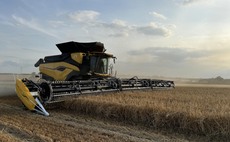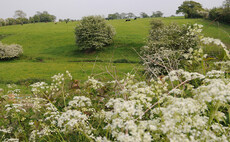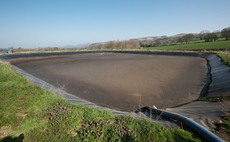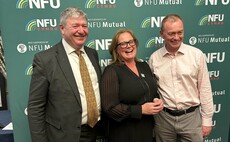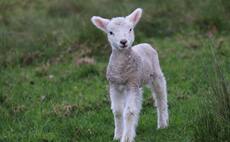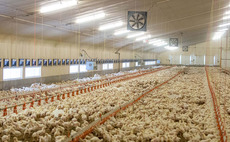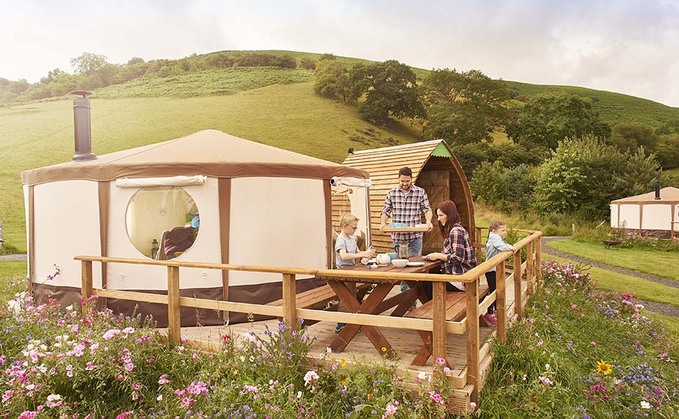
Whether you run a small family farm or a sprawling estate of thousands of acres, having the right business structure is vital.
It is a stereotype, but the Country Land and Business Association (CLA) says it is all too true that farmers become so busy farming that getting their business affairs in order is often an afterthought.
Burying heads in the sand when it comes to subjects such as succession is well-documented among the agricultural community, but before any of these big debates can be had, the actual structure a business very foundations laying down how it operates needs to be in place. Put simply, a business structure describes the legal make-up of the business.
Sole trading and partnerships are the most basic structure, with no ongoing requirements, such as shareholder meetings. A limited company, on the other hand, is a structure which recognises a business as a separate legal entity to its owners; making them only liable for the amount of share capital they have rather than any additional wealth or assets. Louise Speke, the CLAs chief tax adviser, says many farming familys accountants suggest they go down the route of becoming a limited company.
But this can involve significant additional administrative costs which are not always strictly necessary. Becoming a limited company might have been the right thing for the farm a generation or two ago, but it is something which needs keeping under review, says Louise, whose background is as a solicitor. Likewise, changing family dynamics more members of the family becoming involved because of a diversification, such as a holiday let, for example may mean it is time to review the business and set up or change the partnership arrangements or set up a limited company to operate that new business venture.
Its important farmers know what the options are and that they dont blindly go down one route because theyve never looked at alternatives. Direction When a business is started there is usually a very clear view about its future and this is the obvious time to get that business structure worked out. But it is also important to take stock down the line with an existing farming business and ask questions such as if the structure is right for where the farm is headed now? Louise says: It sounds morbid, but it makes sense to imagine what would happen to the business if somebody on the farm lost capacity through a farming accident, for example or if there was a sudden death.
If youre not going to be around, the paperwork has to be in place to make sure the farm you have worked so hard in establishing continues in the way you would want. Its a lack of paperwork, such as a partnership agreement, which can trigger disputes or mean the partnership ends on the death of a partner. Imagine two brothers farming together and one decides hes retiring. With nothing written down about retirement in the business structure documents about how this will work, there is no reference point.
Rural businesses are unusual in that they are more diversified, with more income streams than perhaps a restaurant, hairdressers or plumbers. The foundation stone of a business is its structure. Its so important to recognise that a business is an evolving thing, something which needs to be taken stock off on a regular basis is the structure in place still the right one for the business and are the right people involved? A way of doing business which suited previous generations may be the wrong one for today.
Unless the right business structure is in place, it is very difficult to go on and tackle other subjects from the basics, such as the cars the business runs, to the big ones, such as succession, inheritance and taxation. Often the decision over which business structure to use will be tax-led. From an inheritance-tax point of view, it is important to establish whether or not assets are owned by the farming business or just used by it.
Other key considerations are how any farm profits are to be divided, what records need to be kept and attitude towards information about the farm, such as accounts, being public. While sole traders and partnerships can keep finances confidential, going down the limited company route involves the business being registered at Companies House, with financial details, such as the profits, borrowing and assets in the company, visible to the public. Louise says: Here at the CLA we know how hard farmers work. All that work can be to no avail if the paperwork the business structure isnt in place.
CLA ADVICE ON BUSINESS STRUCTURES
THE CLAs professionally qualified advisers have the expertise to give impartial advice on what you need to consider when thinking about the right structure for your business.
This can include whether a partnership or a company is right for you to use or whether your new business venture should be part of your existing business or run as a separate enterprise.
It will also advise on the tax implications of the options you are considering, including the impact on succession planning to transfer your business to the next generation.
BUSINESS STRUCTURE: THE BASICS
- Each farming business operation is different and should adopt a business structure which is appropriate for its unique situation
- Business structures may need to change over time in light of legislation, family circumstances, the degree of business growth and the external business operating environment. However, the cost of change is often significant and the ideal is choosing a structure which will suit for a long period of time
- Sound risk management, business plans and succession plans are vital for a viable farming business operation
LEGAL IMPLICATIONS
SOLE TRADER/PARTNERSHIP
- You are the owner
- You are the manager
- You are self-employed
- In the event of any legal dispute, you will be sued personally
- Joint and several liability in partnership
COMPANY
- Business is a separate legal entity
- You are a shareholder
- Individual serves as an office holder and/or employee
- Company is responsible for its own debts/actions, unless director committed criminal offence or fraud
- Company provides limited liability
PRACTICAL CONSIDERATIONS
SOLE TRADER/PARTNERSHIP
Financial business information can be kept private
- Less formality if sole trader, but a partnership should have a written agreement
- Good practice to have separate business bank account so it is easier to track business expenditure and income
COMPANY
- Annual accounts are filed with Companies House, so less privacy
- Need for board decisions to be minuted and AGM formalities met
- Limited liability in practice small business owners may have to give personal guarantees
- Company must have separate bank account
FIVE MOST COMMON BUSINESS STRUCTURES IN AGRICULTURE
FARMS usually operate as a: sole proprietorship; partnership; limited liability company; share farming; or co-operative. Because it is the default organisation if nothing is done to formalise the business structure, most farms operate as sole proprietorships.
- Sole proprietorship: A business owned and run by an individual
- Partnership: Two or more persons agreeing to carry on a business together with a view to making a profit
- Limited liability company: A company formed and registered under the Companies Act 2006 (or earlier), that is limited by shares or by guarantee
- Share farming: Where two farmers agree to work together to share the farming of some land, while maintaining their independent farming businesses
- Co-operative: An association owned and controlled by individuals or businesses that come together to achieve a common economic or social goal







